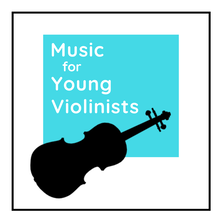|
The capitalized term SMART Goals is an acronym and refers to an evidenced-based formula for achieving a goal. The term "evidence-based" means using the best available research to inform decision-making, interventions, or strategies based on scientific research, and I propose we bring evidence-based practices into our work as musicians. A "smart goal" for any violinist would be "I want to practice my vibrato more." And who can argue with that? It is not a bad start, but it is akin to saying come to my house for dinner & leaves us with several voids: Where do I live? How do you get there? What date works best? When should you arrive? Are there any cats? Are you allergic to cats? Do you have any food preferences? Etcetera, etcera. Saying, "Come to my house for dinner," is not specific enough to create the best outcome, and the same problem happens when we settle with using vague goals for our violin playing. Using the "SMART goal" paradigm, the goal to practice vibrato more would turn into: "At the start of every practice session, Monday-Friday, for the next 3 months, I will set my timer for 8 minutes and work on technical exercises X, Y & Z, being conscious of the excess tension I am holding in my *tongue and eyes and then I will spend 6 minutes playing 1-octave G, D & A major scales in whole notes while I transfer my vibrato technicals into my violin playing." *I know that probably sounds weird, but believe it or not, this body part is usually too activated and tense. Phew! Can we agree that's quite a different goal? Which violinists will make better use of their time and progress faster? What exactly is a SMART goal? The capitalized term SMART Goals is an acronym and refers to an evidenced-based formula for achieving a goal. The term "evidence-based" means using the best available research to inform decision-making, interventions, or strategies based on scientific research and proven outcomes and is the standard approach in the medical field. It can also be seen in education, sports, and policymaking. I propose we bring evidence-based practices into our work as musicians. The SMART acronym stands for:
The gist of the entire SMART goal concept is getting specific. Let's look at each SMART goal template component to understand better how this can benefit a violinist. Specific: Define goals clearly and precisely. Taking our example of "to practice vibrato more," we can add a particular quality to this goal; perhaps we seek to make our vibrato more natural and less tense. Or, perhaps a particular finger, part of the hand, or arm needs to be adjusted in its angle to get a better-sounding vibrato. If you are still trying to figure out what better means for your musical goal, think about techniques because these are the ingredients for making something better. Measurable: Establish criteria for tracking progress. The example provided used time as a measurement: 8 minutes of technicals followed by 6 minutes of applying these into one-octave scales. Additional measurements for musicians include the quantity of repetitions, the number of bars to memorize, or a metronome tempo. Achievable: Set realistic and attainable goals. Yes, it's very exciting to set the goal to learn all of the unaccompanied solo Bach Partitas and Sonatas, but is this achievable for a 17-year-old high school senior to accomplish in 3 months while concurrently auditioning for different colleges? Realistic: Ensure goals align with broader objectives. This ties in with the achievable aspect of SMART goals. Our sample high-school-aged violinist above may be prodigious in their capacity, but this also occurs while completing their high school coursework and in the middle of their basketball season. You get the idea, which is why each part needs to be individualized to the musician and the context of their broader life. Time-bound: Set deadlines for goal completion. For this 17-year-old talented student in the middle of their extra-curricular sports, auditions, and coursework, perhaps they can learn the entire repertoire of unaccompanied Bach. It is just that the timeline needs to be appropriate, and they can focus on one Sonata or Partita every 6 months for the next 3 years. Timelines, when used appropriately, create the structure to soar. Drawbacks of the SMART goals system: It is exciting to use formats like the SMART goals to help us achieve our human potential and use evidence-based research to support us in living our dreams, but they are without limitations. 1- The first drawback is that it may be too cumbersome and time-consuming to apply a SMART goal to every portion of a musician's practice curriculum (scales, rhythm, etudes, repertoire, ensemble pieces & solo preparation). It could easily take an hour to collaborate on creating a SMART goal for each portion of a violin student's curriculum, which is not likely a good use of time. m 2- Next, SMART goals do not permit the exploration element because it is so specific. Playing music should involve playing in the true sense of the word "play." Resources for goal setting: I am no stranger to writing about the importance of setting goals, and I aimed to model & create structures for this for my students when I was actively teaching. I started thinking of goals as being like GPS coordinates for your dreams when I first wrote about this subject in 2018. This led to the creation of goal-setting resources (like the Rainbow Goal Sheets for sale in the store and free samples on the FREEBIES page). My passion for this topic continues because I find it relevant as I progress through different developmental stages as an adult. I also chose the example of vibrato in this post because some students and teachers need help with this element of music-making. If you have yet to see my video on vibrato, check it out here and learn an easier and ergonomic way to do vibrato on the violin. Lastly, please help yourself and download the SMART goal worksheets below to use with your students to help make this concept more tangible and accountable in a lesson structure.
What do you think of SMART goals? Can you see yourself using this? Do you have any criticisms? Please join in the conversation and post some feedback below.
0 Comments
Leave a Reply. |
Categories
All
Archives
February 2024
AuthorHi! It's me, Heather. I absolutely love working on the Music for Young Violinists project and all the many facets: blogging, website, music, teaching materials, freebies, videos, newsletter and giveaway contests. The best part is connecting with you so feel free to drop me a line. You can learn more about me on the "ABOUT" page. Thanks! |
||||||
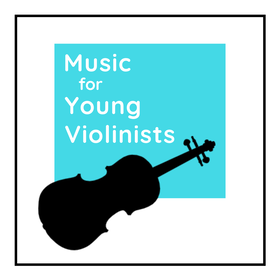
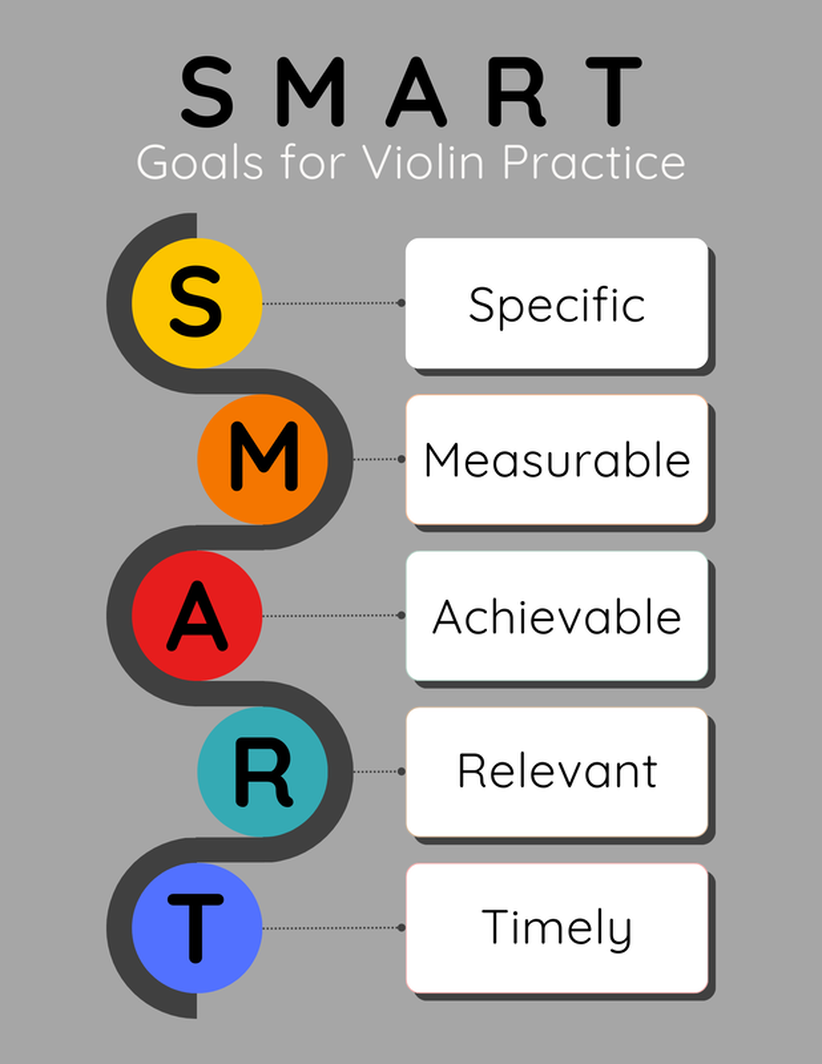
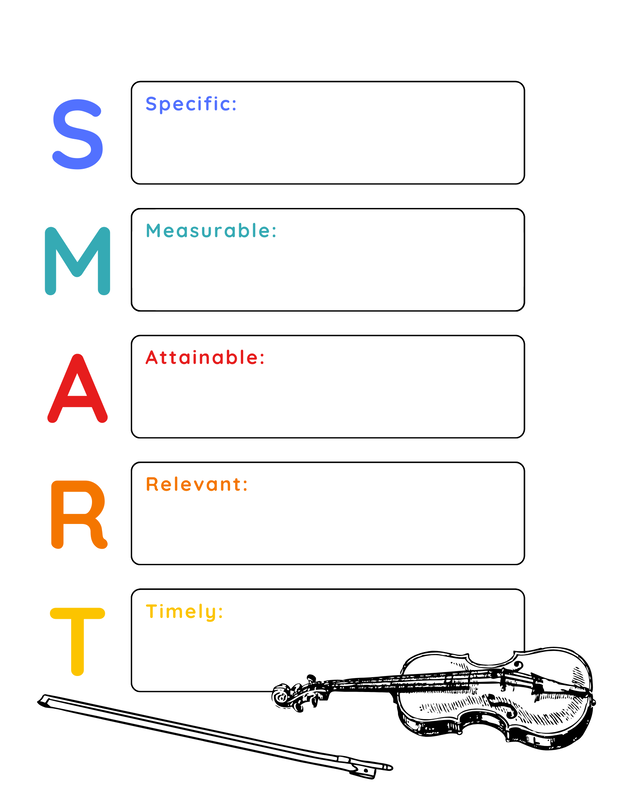
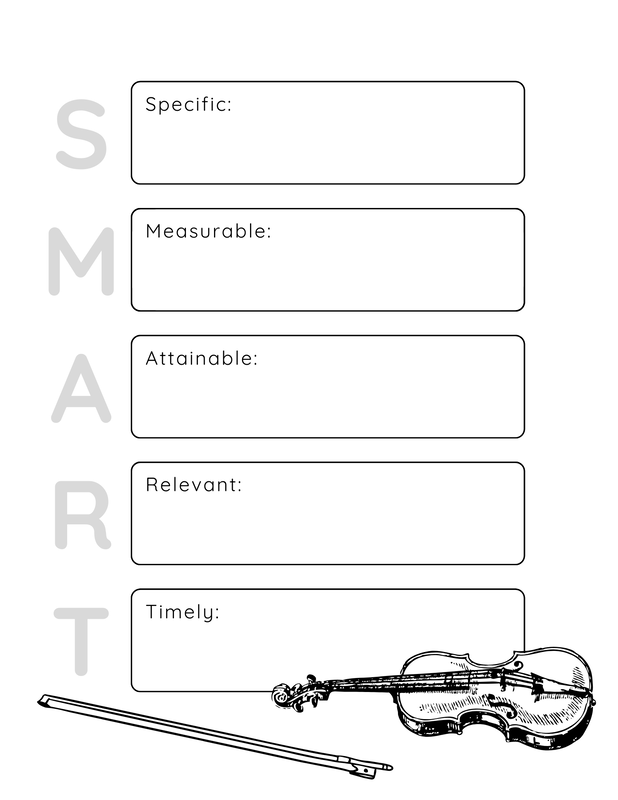
 RSS Feed
RSS Feed
